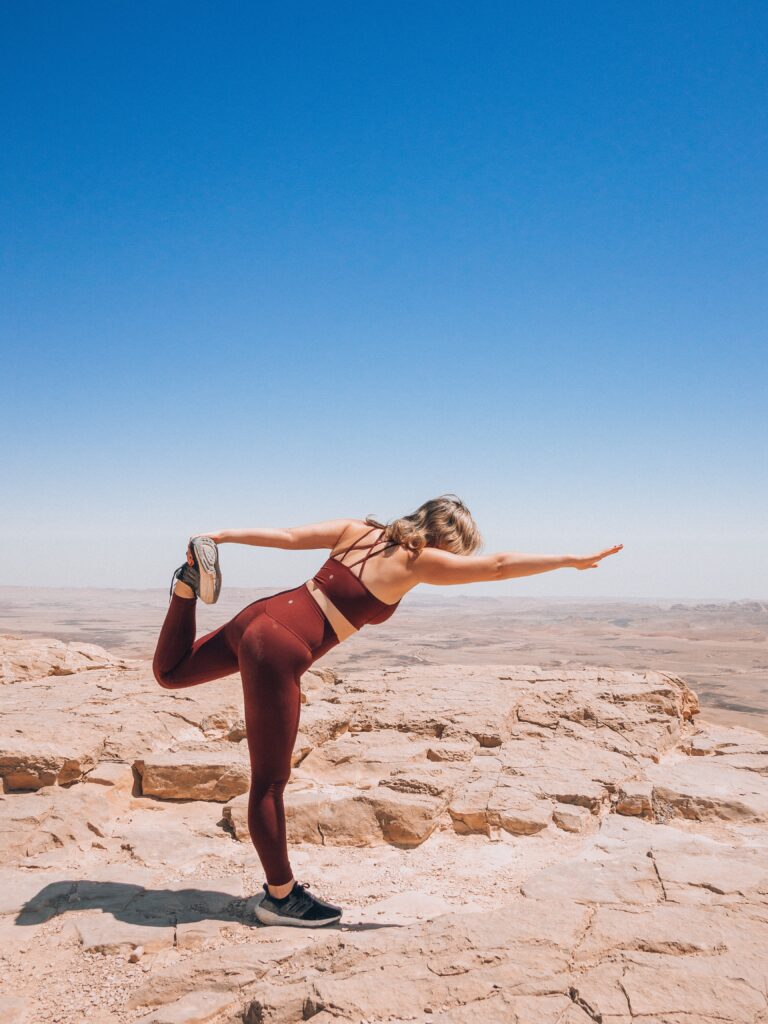In this article, you will discover various exercises that can improve your balance. We’ll explore a range of exercises that target different muscle groups and help improve stability. From simple standing exercises to more challenging ones, you’ll learn how to enhance your balance and coordination. Whether you’re a beginner or someone looking to advance their balance skills, this article will provide valuable insights and exercises to help you achieve your goals. So, let’s get started and improve your balance together!

Why is balance important?
Balance plays a crucial role in our daily activities and overall well-being. It is the ability to maintain the body’s equilibrium while performing various movements or staying in a stationary position. Having good balance is essential for coordination, stability, and preventing falls or injuries. In this article, we will explore the importance of balance, the factors that can affect it, different types of balance exercises, and how to incorporate them into your fitness routine.
The role of balance in daily activities
Balance is involved in almost every physical activity we perform throughout the day. Whether it’s walking, running, climbing stairs, or simply standing up, our bodies rely on a well-functioning balance system. Maintaining proper balance allows us to move with control, stability, and confidence. It also contributes to our ability to perform tasks requiring precision and coordination, such as playing sports, dancing, or carrying objects.
The impact of balance on fall prevention
One of the key benefits of having good balance is its role in preventing falls. Falls can be a significant concern, especially for older adults, as they can result in serious injuries and a loss of independence. By improving our balance through targeted exercises, we can reduce the risk of falls and mitigate the potential consequences.
Factors affecting balance
Several factors can influence our balance, including age-related decline and certain medical conditions. Understanding these factors can help us take proactive measures to maintain or improve our balance.
Age-related decline in balance
As we age, our balance naturally declines due to various physiological changes in the body. The sensory organs responsible for providing information about body position and movement may become less efficient. Additionally, muscle strength and flexibility can decrease, affecting our ability to control movements and maintain balance. However, regular balance exercises can mitigate the age-related decline and maintain stability.
Medical conditions causing balance problems
Certain medical conditions can also impact our balance. Conditions such as vertigo, inner ear disorders, neurological diseases, and musculoskeletal problems can affect the body’s balance system. It is important to seek medical advice if you experience chronic balance issues or if your balance problems are accompanied by other symptoms.
Types of balance exercises
To improve balance, it is important to engage in specific exercises that target the balance system. These exercises can be categorized into three main types: static balance exercises, dynamic balance exercises, and proprioceptive exercises.
Static balance exercises
Static balance exercises involve maintaining a stable position without any significant movement. These exercises focus on training the body to maintain equilibrium and develop core stability.
One example of a static balance exercise is the single-leg stance. Stand on one leg and hold the position for 30 seconds. Then switch to the other leg. This exercise challenges your body’s balance by forcing it to rely on stability muscles and proprioceptive feedback.
Another example is the heel-to-toe walk, also known as the tandem walk. Begin by standing with one foot in front of the other, with the toes of your back foot touching the heel of your front foot. Take heel-to-toe steps, maintaining this alignment as you walk forward in a straight line. This exercise improves balance and coordination while also targeting the muscles of the lower body.
The tree pose from yoga is another effective static balance exercise. Stand tall with your feet hip-width apart. Shift your weight onto one foot and bring the sole of your other foot to rest on the inside of your standing leg, either above or below the knee. Find a focal point to help you maintain balance, and hold this position for 30 seconds before switching sides. This exercise improves stability and strengthens the muscles of the lower body.
Dynamic balance exercises
Dynamic balance exercises involve controlled movements that challenge the body’s ability to maintain equilibrium while in motion. These exercises work on coordination, strength, and balance simultaneously.
Side lunges are an example of a dynamic balance exercise. Start by standing with your feet hip-width apart. Take a lateral step to one side, keeping your other foot planted on the ground. Bend the knee of the lunging leg while keeping the other leg straight. Push off with the lunging leg and return to the starting position. Repeat on the other side. This exercise targets the muscles of the lower body and enhances balance.
Walking lunges are another excellent dynamic balance exercise. Begin by standing with your feet hip-width apart. Take a step forward with your right foot, bending both knees to lower your body into a lunge position. Push off with your right foot to bring your left foot forward into the next lunge position. Repeat this walking lunge motion for a certain distance or number of repetitions. This exercise improves balance, leg strength, and coordination.
Calf raises are a simple yet effective dynamic balance exercise. Stand with your feet shoulder-width apart and rise up onto your toes, lifting your heels off the ground. Pause at the top of the movement and then lower your heels back down to the ground. Performing calf raises challenges your balance while strengthening the muscles of the lower legs.
Proprioceptive exercises
Proprioceptive exercises focus on improving the body’s awareness of its position, movement, and coordination. These exercises help train the proprioceptors, which are sensory receptors located in muscles, tendons, and joints.
Balance board exercises are a popular proprioceptive exercise. Stand on a balance board, ensuring that your feet are positioned parallel and hip-width apart. Engage your core and try to maintain your balance as the board tilts in different directions. Start with small movements and gradually increase the intensity and duration of the exercise.
Using a Bosu ball is another effective way to enhance proprioception. Stand on the flat side of the Bosu ball, ensuring that your feet are parallel and hip-width apart. Engage your core and try to maintain your balance as the ball challenges your stability. As you gain proficiency, you can introduce various movements like squats or single-leg balances to increase the difficulty.
Yoga is particularly beneficial for improving proprioception. Various yoga poses, such as the warrior pose, dancer’s pose, and tree pose, require body awareness and balance control. Practicing yoga regularly can significantly improve proprioception, balance, and overall body coordination.
How to incorporate balance exercises into your routine
Incorporating balance exercises into your fitness routine is relatively simple and can yield significant benefits. Here are some tips to get you started:
Starting with simple exercises
If you’re new to balance training, begin with simple exercises that you feel comfortable with. Focus on static balance exercises such as the single-leg stance or the heel-to-toe walk. These exercises provide a solid foundation for improving balance and can be easily incorporated into your daily routine.
Gradually increasing difficulty
Once you feel confident with the basic exercises, gradually increase the difficulty. Progress to more challenging static balance exercises like the tree pose or dynamic exercises like side lunges and walking lunges. You can also try incorporating balance props, such as balance boards or Bosu balls, to further challenge your stability.
Adding balance challenges to existing workouts
Another way to improve balance is to incorporate balance challenges into your existing workouts. For example, perform exercises like squats or overhead presses while standing on one leg. This adds an element of instability and engages the balance muscles. You can also try performing exercises on an unstable surface, such as a foam mat or a balance cushion.
By including balance challenges in your regular strength training, cardio, or flexibility routine, you can maximize your workout effectiveness and improve your balance at the same time.

Benefits of balance exercises
Regularly practicing balance exercises can bring numerous benefits to your overall well-being. Here are some key advantages:
Increased stability and coordination
Improving your balance enhances your stability and coordination, making everyday activities easier and more efficient. Whether it’s walking on an uneven surface, navigating stairs, or performing sports movements, having good balance allows you to move with confidence and control.
Improved posture and alignment
Balance exercises often engage the core muscles, which are essential for maintaining good posture and alignment. By strengthening these muscles, you can improve your overall posture, preventing back pain and enhancing overall body mechanics.
Reduced risk of falls and injuries
Falls can have severe consequences, especially for older adults. Practicing balance exercises can reduce the risk of falls by enhancing your stability, coordination, and reaction time. By improving your balance, you can maintain your independence and reduce the likelihood of fall-related injuries.
Precautions and considerations
While balance exercises are generally safe for most individuals, there are a few precautions and considerations to keep in mind:
Consulting with a healthcare professional
If you have any underlying medical conditions or concerns about your balance, it is always wise to consult with a healthcare professional before starting a new exercise routine. They can provide personalized recommendations and address any specific concerns or limitations you may have.
Using proper equipment and support
When performing balance exercises, ensure that you use proper equipment and support. Wear appropriate footwear that provides stability and traction. If needed, use handrails or grab bars for support during challenging exercises. Safety should always be a priority to prevent any potential injuries.
Modifying exercises for individual needs
Balance exercises can be modified to suit individual needs and fitness levels. If you find certain exercises too challenging, start with simpler variations and gradually progress. Likewise, if you have specific limitations or injuries, adapt the exercises accordingly, or seek guidance from a qualified fitness professional.

Conclusion
In conclusion, balance is a crucial aspect of overall fitness and well-being. Regularly practicing balance exercises can significantly improve your stability, coordination, and reduce the risk of falls. By incorporating a variety of static, dynamic, and proprioceptive exercises into your fitness routine, you can enhance your balance and coordination, leading to improved performance in daily activities. Remember to always prioritize safety, consult with a healthcare professional if you have any concerns, and tailor the exercises to your individual needs. Start improving your balance today and enjoy the benefits it brings to your life.





